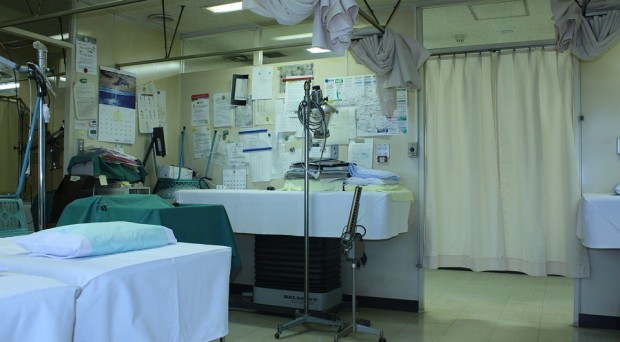
Could you explain the aims of carrying out this review?
In the last ten years, multiple studies have provided increasing evidence that contaminated surfaces in hospitals can contribute to the spread of bacteria that can cause hospital-acquired infections.
Because many factors make it difficult to keep surfaces that are touched by patients and healthcare personnel clean and free of pathogens, there is increasing interest in newer approaches and technologies that can supplement routine housekeeping protocols.
The present review was designed to summarize new disinfectant products that are available for use in healthcare facilities, methods for applying disinfectants to surfaces, and new approaches to monitor how well surfaces are cleaned and disinfected. New ‘no-touch’ technologies that can be used to supplement standard cleaning and disinfection practices are also reviewed.
What did you find to be the most and least successful disinfectant technique currently available?
Currently, I think it is fair to say that the ‘perfect’ hospital-grade disinfectant that is ideal for use in all situations has not yet been developed. Some factors that must be considered when selecting a disinfectant for use in hospitals include how effectively and rapidly it kills bacteria, viruses and fungi of concern, ease of use, the likelihood that repeated use may damage medical equipment, and cost.
Currently, I think it is fair to say that the ‘perfect’ hospital-grade disinfectant that is ideal for use in all situations has not yet been developed.
Quaternary ammonium disinfectants are widely used because they have a broad spectrum of activity, are good cleaning agents, are generally compatible with many surfaces and are inexpensive when purchased in a concentrated form that can be diluted before use.
However, they are not effective against bacterial spores (e.g., Clostridium difficile spores ) and some important viruses such as Norovirus, and can be affected by organic material on surfaces.
Application using cotton rags may reduce their effectiveness in killing bacteria, and on rare occasions, the use of some quaternary ammonium disinfectants has caused occupational asthma among exposed individuals.
Disinfectants containing sodium hypochlorite (bleach) are very effective against many pathogens including spores and viruses such as Norovirus and Ebola virus, are fast-acting, and inexpensive in dilutable form. Some, but not all, products have an odor that can be unpleasant, and may damage metal surfaces if used repeatedly.
Improved hydrogen peroxide disinfectants are effective against many pathogens, are fast-acting, easy to use, safe for workers and the environment and have good surface compatibility.
Currently, they may be more expensive than other disinfectants, and are not sporicidal in low concentrations. Limited studies suggest they have several advantages over quaternary ammonium disinfectants.
How far has our understanding of infections in hospitals come over the past say ten years?
In the last 10-15 years, we have gained considerable insight into the microorganisms that cause healthcare-associated infections, the mechanisms by which they are spread, and evidence-based practices that can be used to prevent infections.
For example, advanced molecular diagnostic tests and the ability to use DNA sequencing methods to differentiate one strain of bacteria from another have improved our ability to detect pathogens and to shed light on how pathogens are transmitted in hospitals.
Multidrug-resistant pathogens have emerged as significant causes of healthcare-associated infections, and have emphasized the importance of more careful use of antibiotics.
There is better recognition of the role of hand hygiene as one of the most important methods for reducing the spread of pathogens, and the greater use of ‘bundles’ of evidence-based practices has significantly reduced the frequency of catheter-related bloodstream infections, catheter-related urinary tract infections and infections following surgical procedures.
Didier Pittet, board member for ARIC and hand-washing provocateur, presented recently in a TEDx talk about how 5-8 million lives are saved each year by focusing on hand hygiene in hospitals. You can watch the video below:
How could this be developed further in the future?
Developing strategies to more fully implement traditional evidence-based infection prevention practices should result in further reduction of healthcare-associated infections. Electronic compliance monitoring systems may emerge as an additional tool to improve hand hygiene practices among healthcare personnel.
Further development and use of automated technologies such as mobile ultraviolet (UV) light devices, hydrogen peroxide vapor systems, and other ‘no-touch’ disinfection methods may improve the ability of healthcare facilities to minimize contamination of surfaces and reduce transmission of healthcare-associated pathogens.
Latest posts by John Boyce (see all)
- Keeping surfaces clean in hospitals: an author Q+A - 11th April 2016
If bleach is such a great surface cleaner and only some varieties of it have an unpleasant odor, why aren’t the non-odorous versions used everywhere?
What have you discovered regarding the removal of the bioburden once it’s killed? When talking with many IP professionals, the removal is often overlooked. You could kill different spores but they just sit there as food for other organisms. I would be interested in knowing if there is a study regarding the removal of dead spores from patient rooms. Thanks!
It is difficult for cleaning staff to clean a poorly maintained environment and they may not have the authority or ability to request repairs. Staff should regularly check their areas for faults and repairs that are required and ensure that these are followed up and resolved. The general decor, flooring and furniture should be reviewed critically and regularly.